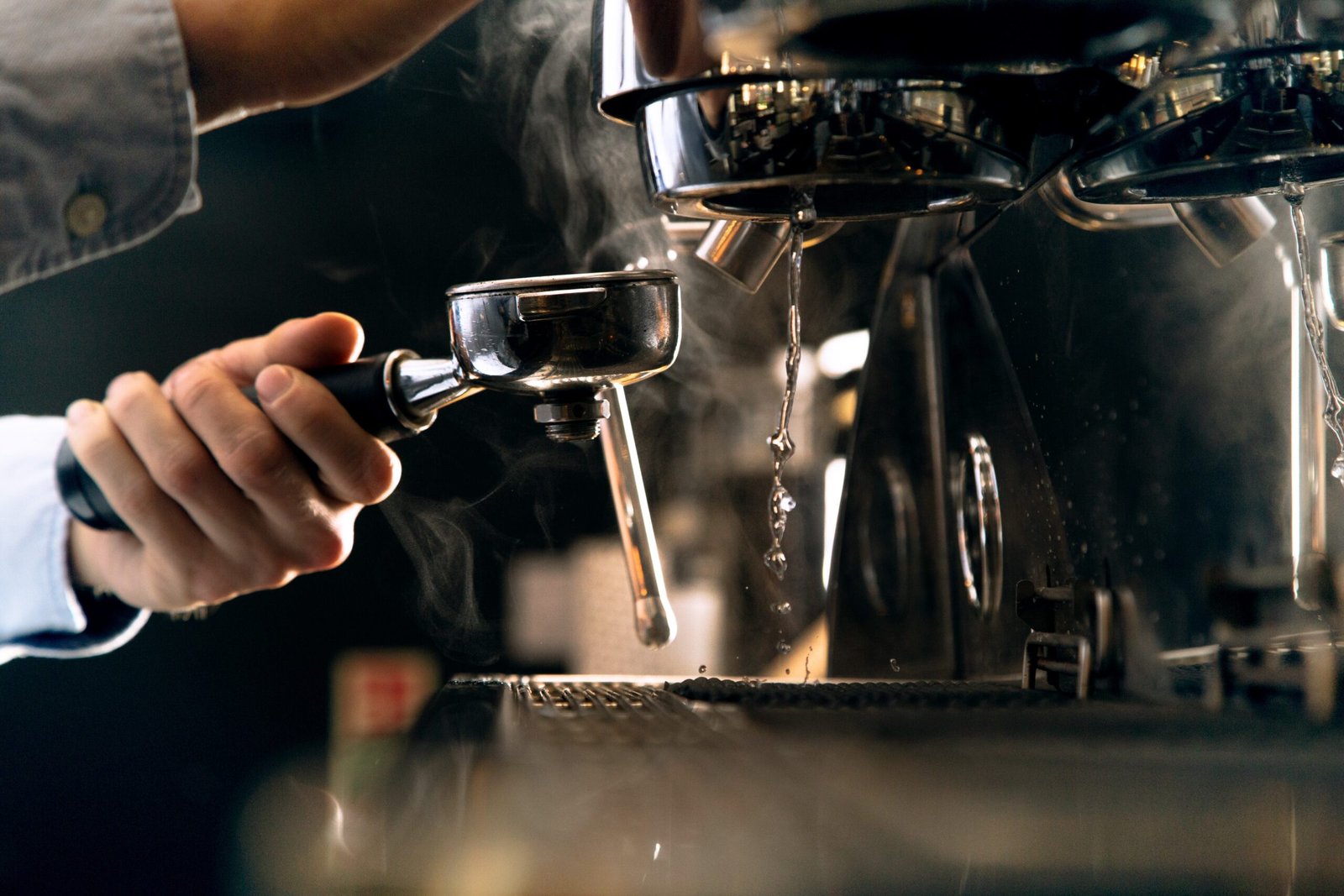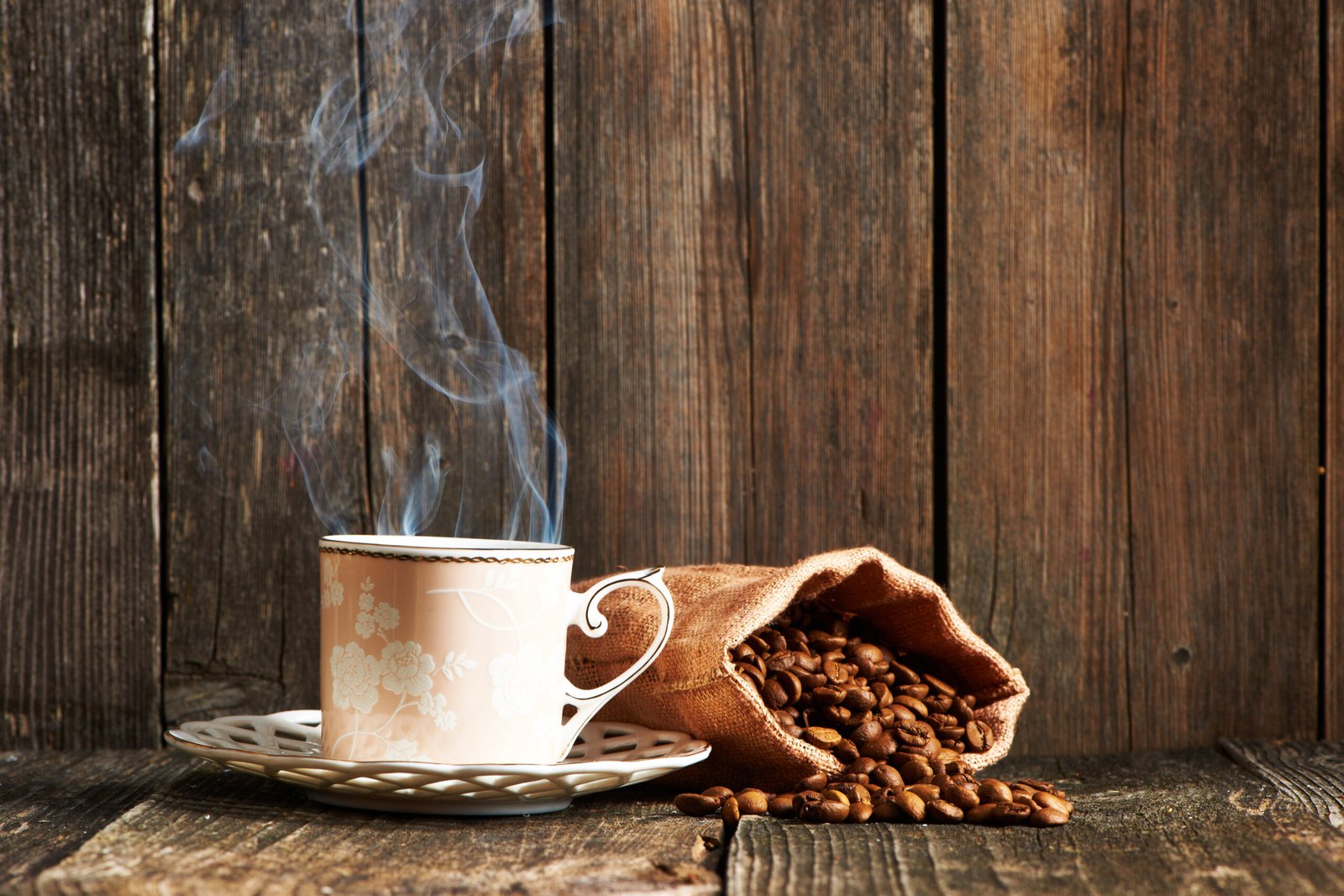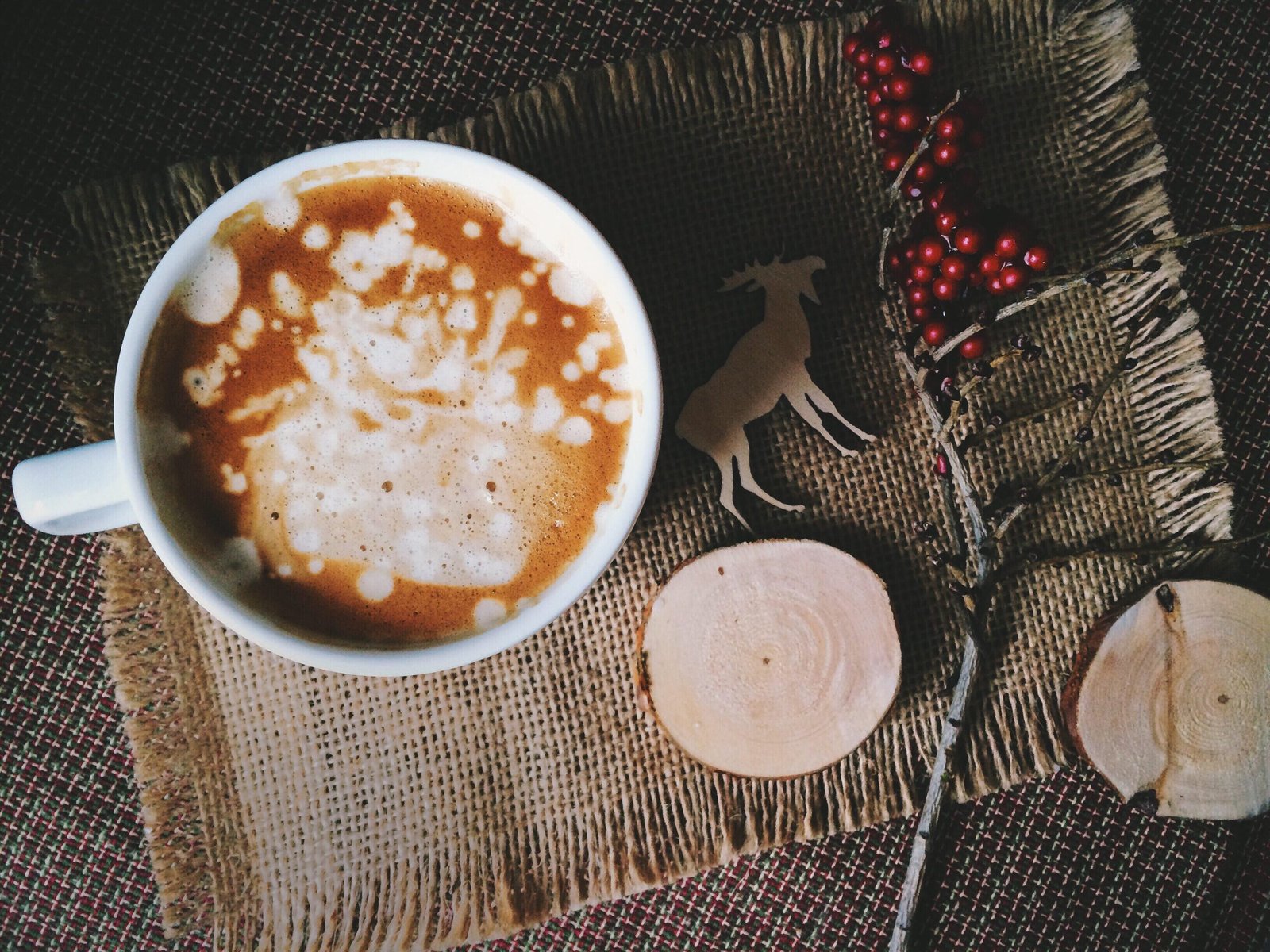Best Way to Make Coffee: Barista Secrets and Tips
Best way to make coffee does not require expensive machines. Ask a barista how to make good coffee, and you will be told that it all depends on the equipment you use. Even a small French Press can help kickstart your day with a perfect caffeine boost.
Everyone has a unique palate when it comes to caffeine. Even the best café in town may not serve you the perfect cup of coffee.
Knowing how to make good coffee includes tweaking the tricks according to your palate. So, make sure, you DO NOT miss any details here. Before you will reach the end of this blog, you will already have your very own, warmest coffee recipe to suit your unique palate.
Coffee and Water – That’s All You Need!
For a coffee that goes down your throat and clicks in your brain, all you need is just water and coffee ‘done right’. Making a good cup is really simple if you know how baristas handle it.
Know Your Roast
The real flavor comes from the type of roast you choose and its freshness. Even your unbeatable recipe can fail too if you pick an unsuitable roast. Some roasts must be consumed within 5 days, while others can last up to a month.
If you use packaged coffee, then check the packaging type. The right packaging is one that has aluminum or silver-lined inside to maintain freshness. Storing your roasted beans is equally important and I have talked about it in detail later here.
Know Your Grinder
The type of grind you need depends on your palate. While people define coffee palates in quite complicated terms, I put them in 2 categories. The first is caffeine punch, and the second is the flavor. So, what makes a good coffee as per your palate?
- If you want caffeine punch, use a coarse ground from fresh beans. The fresher your beans, the better caffeine punch you get.
- If you want to extract the true flavor, use fine grind. Freshness of roast is important here too.
Check Water Quality
The taste of coffee depends on the quality of water you use. Chlorine or mineral-loaded heavy water can totally ruin the taste, no matter how you make it. The fool-proof method is to either use bottled spring water or install a charcoal filter on your source of water.
Once you have boiled the water for coffee, use it immediately. Double-boiled water gives a stale flavor to your otherwise perfect morning cup.
Tickle Beans at the Right Water Temperature
Best tickles get you the best laughter.
Making a satisfying cup of coffee requires you to tickle the beans at the correct water temperature. If you pour warm water on beans, you will get only 30-50% of the flavor that would be on the bitter side. However, if you pour very hot water, too much chemical reaction will kill the freshness that comes with the slow release of flavor.
So, what’s the right temperature to make a perfect cup of coffee?
Ideally, it is 205 degrees, but you don’t always use a thermometer. Or do you?
My trick always works. Bring water to a boil, and leave it for 30 seconds covered. Then pour and sip heaven.
If you are wondering how to make strong coffee, make sure to use this trick.
If you are a fan of Walter White, check water pH too. It should be in the range of 7.
Coffee Rules You Can’t Ignore
If you want to know how to brew the best coffee like a barista, here are the rules that baristas ALWAYS follow!

1. Bubble Head
Whenever you pour coffee in the cup, a head of bubbles must form on the top. If the head of bubbles does not form, it means you will not get the best flavor. In this case, I use it as fertilizer in my garden.
2. Fresh Beans
Baristas go through the hard work of roasting their beans. This is why their coffee is never mistaken. Are you wondering how to make good coffee at home minus the hard work? Here are your options and tricks.
- Buy beans from a local roaster. Find a reliable roaster who sells freshly roasted beans only. Facebook Marketplace (or Meta) is a good place to find such local roasters in your neighborhood. You can also check Google Maps to find nearest local roasters.
- Supermarket display bins are a good choice too. However, avoid bulk buying from there, no matter how tempting their deals are.
- Avoid picking bright light beans. Such beans are often oxygenated and ruin the flavor.
- Avoid mixing your beans. Make sure your bean seller cleans the roasters when going from one batch to another. Even if same type of beans are used in different batches, the oils can stick to the sides of storage tubes and ruin the flavor of next batch.
3. Storage
Buy roasted bean supply of 5-7 days, put in a glass container with a tight lid, and keep at room temperature away from other foods. That’s it. There is no left or right to this rule. Make sure to clean your storage containers before each refill. This will help avoid oil buildup and moisture absorption.
You really need to treat your beans like a precious diamond ring.
4. Bean Quality
It may come as a surprise to you, but many commercial brands do not use good-quality beans. Some commercial brands use high-quality beans, but you may have to cut a hole in your wallet to buy them. I have a better alternative.
If you live in a country that produces its own coffee, then find a grocery store that sources local beans.
If you do not live in a country that produces its own coffee, then look for Arabica.
5. Coffee Filters
Find dioxin-free or oxygen bleached filters for an optimal flavor of the coffee.
6. Do not Reheat Your Coffee
This should not need to be said, but some people reheat their coffee (and I believe you cannot stand it like me).
Any kind of reheating process can destroy even the best-tasting cup.
How to Brew the Perfect Cup of Coffee
Making good coffee depends on several factors, like the brewing method, ground type, filter, water quality, the ratio of coffee and water, etc. Once you have all sorted mentioned in the previous section, then here is a little more to get your perfect cup of coffee.
I will start with the coffee to water ratio.
How to Make Coffee for One Person
If you ask me how to make really good coffee, I will say measure water by cup size and beans by heart. Now, this is years of caffeine craze speaking here.
But…
Coffee flavor grows over time and needs a lot of experimentation. A good rule of thumb is to begin with 60 grams of coffee per liter of bottled spring water.
The right balance of flavor will come from experimenting. Start with 10 grams of extra coffee per liter for extra flavor. For example, if you are making for two persons, take 500 ml water and 35 grams of coffee.
Making One Cup of Coffee is Critical
A little change in coffee weight can greatly affect the flavor of your pot. Making one cup means that you need to experiment with a little weight of coffee and water.
When I wanted to find the right balance, I started with 250 ml water and 15 grams of coffee. Then I slightly increased the coffee to 17 grams. My perfect balance is 18 grams coffee to 250 ml water.
Bonus Tip: Keep your water temperature below boiling. Bring water to boil, turn off the heat, and leave water covered for 30 seconds. That’s when you get the right water temperature without a thermometer.
What is the best Way to Brew Coffee

The best way to brew coffee is to do it at home.
Once you get your morning cup done right, you may not love coffee from every café. The barista trick is in knowing the brew types and using correct brew methods for that lip-smacking cup.
If you want to know how to make a cup of coffee step by step using different brew methods, do not miss out on any details.
Brew Type 1: French Press or Cafetiere
Classic cafetiere is my personal favorite for a morning kick.
- It’s easy and quick.
- You don’t need filters.
This is the best recipe with French Press.
You Need
- Kettle
- Bottled spring water (or any other of your choice)
- French Press
- Grounds
Method
Difference between Chemex and V60
The next two types are Chemex and v60. Many people put Chemex and v60 in the same category however, there are many differences between the two.
- Chemex has a thicker filter, which makes filtering time longer. The filter of v60 is thinner. Therefore, its best to use coarsely ground beans for chemex.
- The taste from chemex is slightly towards more bitter side because of slow process.
- Chemex has more capacity than v60. For making more cups, chemex is a better option.
- The thin filter of v60 allows more oils to pass through, however you may get some solids if your beans are too finely ground.
Know more in my ultimate guide on the difference between Chemex and v60.
Brew Type 2: V60
The best way to make coffee with v60 will require fine ground beans.
You Need
- Kettle
- Bottled spring water (or other water of your choice)
- Filter paper
- Finely ground beans
Method
- Bring water to boil in a kettle, then turn off the heat and leave it covered for 30 seconds.
- Now put a filter paper on your v60 and add 18 grams of finely ground coffee on filter paper.
- Now add water that is double the amount of coffee weight. For 18 grams of coffee, put 36 ml water. This process is called bloom. It allows coffee to absorb water and release its rich flavor when you add more water.
- After 30 seconds, add around 50 ml more water and stir. Continue adding more water until you reach 250 ml. this is standard measure for making one cup.
- It will take around 3 minutes for all coffee to extract from the filter.
- Done. Enjoy!
Brew Type 3: Chemex
The process of making one cup of coffee, or more, with a Chemex, is almost similar to that of a v60. However, when it comes to flavor and brewing time, Chemex definitely holds a different status.
You Need
- Kettle
- Bottled spring water (or other water of your choice)
- Filter paper
- Finely ground beans
Method
- Bring water to boil in kettle, turn off the heat and wait for 30 seconds.
- Put filter paper on chemex and pour a little water on filter paper. Then discard this water. Making your filter paper wet will help eliminate the paper-like flavor. This flavor can easily come otherwise, because chemex brews the coffee slowly and maximizes flavor extraction.
- Put coarsely ground coffee on the filter paper. The quantity would be a little more than regular ratio. For example, making one cup would require 20 grams of ground beans and 12 ml water.
- Pour 40 ml water on the ground beans to let it soak. Yes, it’s the same bloom process.
- Finally, stir and continue adding water until you have poured all water in the chemex.
- Let brew for 4-6 minutes. The more quantity you are making, the more time you need.
- Serve and enjoy!
Brew type 4: Moka Pot
If you are wondering about how to make strong coffee, Moka Pot is the answer. This old-school method extracts maximum flavor as the water boils through the beans.
You Need
- Moka Pot
- Bottled spring water (or other water of choice)
- Filter basket
- Ground beans
Method
- Pour water in the Moka pot up to valve level.
- Add coffee to the filter basket and tap the basket slightly on countertop to level off the grounds.
- Put filter in the Moka Pot, screw the top and turn on the heat. You can put Moka pot on gas or electric hob.
- Once the water starts to boil, bring down the heat to simmer. We want water to boil through the beans and spill brewed bubbles in the top part of the pot.
- When the coffee is ready, you will hear a hiss sound.
- Pour in cup and check taste. If it is too strong, add water to suit your palate. Enjoy your strong Moka pot.
Brew Type 5: Aeropress
I would compare Aeropress with V60. With Aeropress, you will get strong, rich, and thicker coffee.
You Need
- Kettle
- Aeropress
- Circular Aeropress filter
- Bottled spring water (or water of choice)
- Ground beans
Method
Follow this method if you are wondering how to make a cup of coffee step by step.
- Bring 300 ml water to boil in a kettle. Turn off the heat and leave covered for 30 seconds.
- Adjust your circular Aeropress filter in the detachable plastic cap. Now pour a little water on filter to make it wet. Discard this water.
- After assembling, put 18 grams coffee. The beans should be very finely ground, finer than salt.
- Add 36 grams water to coffee and wait. Yes, it’s the bloom process.
- After 30 seconds, add rest of the water and wait for 1 minute.
- Stir your coffee, reattach the cap and put your Aeropress on a cup. Now you have to apply slight pressure downwards.
- Serve and enjoy your cup!
Tip: To know if the grind you are using is perfect for Aeropress, check resistance when you apply downward pressure. If it is pressed easily, it means the coffee is coarse and you will need finer ground next time. Too much resistance means you need a little coarse ground. Little resistance means the grid size is perfect for Aeropress.

Common Coffee Problems and Their Best Solutions
I have put some coffee in my garden today because it was going bad. I use used or unused beans that have gone bad as fertilizer. Mine had gone bad because the lid of the container was not closing properly.
For every 24 hours of air exposure at room temperature, your coffee loses 10% of its shelf life. There is definitely a difference in the taste and aroma too.
Here are a few common problems that might be leaving you with a bad or not-so-good cup.
Hoarding
The longer you keep ground coffee, the easier it is to go bad. Buy enough supply for a week only and make sure it is stored tightly in a clean glass container.
Wrong Water Temperature
Making good coffee requires some technical steps, including blooming. When you pour water on beans, the pores of beans absorb water and then start releasing flavors. Too hot water starts flavor extraction too soon and leaves you with a bitter-tasting cup. Too cold water does not let the beans absorb water for blooming.
My easy solution is to bring water to a boil and leave it covered for 30 seconds. Then pour water over grounds and continue with your method.
Wrong Size of Coffee Grind
Each method requires a different grind size. Making good coffee with a V60 requires a fine grind, whereas a Chemex requires coarsely ground beans.
Poorly Maintained Equipment
Brewing and roasting include many chemical reactions during the process. During roasting, a lot of carbon dioxide is introduced into the beans. Similarly, brewing extracts minerals and trace elements that can reside at the sides and bottom of the equipment.
Clean your equipment right after roasting or brewing the beans.
There is Always a Fix for Your Bad Tasting Coffee
There are several other rules that you might be breaking. My guide on Reasons Your Coffee Tastes Bad will definitely help you find the reason for your bad cup and fix the problem. No one should drink a cup that’s not up to their taste palate.
Now that you know everything about what makes a good coffee, the next step is to start finding your right coffee to water ratio balance. Start with 15 grams of coffee to 250 ml water, and move your way up until you find what your palate loves!
